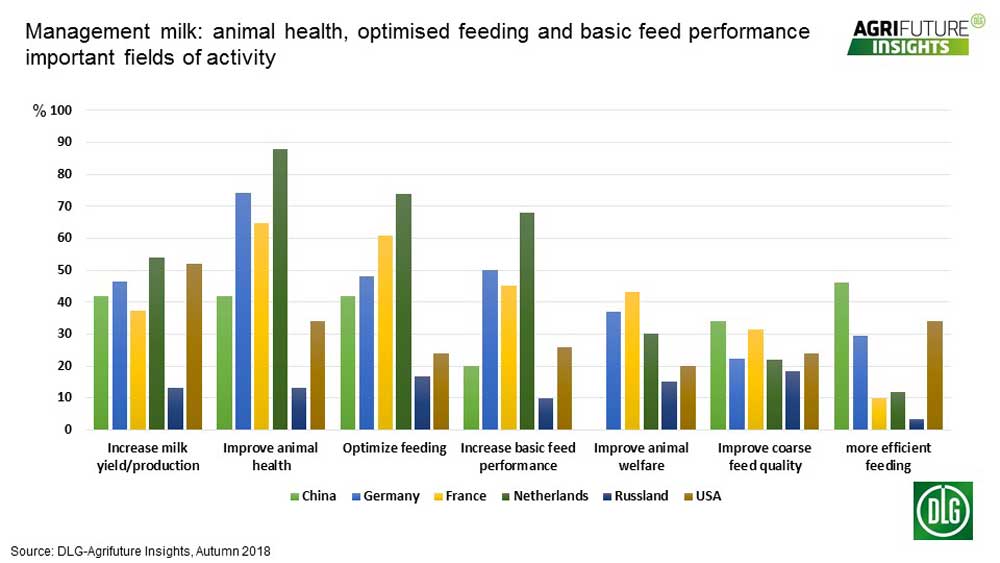Management methods in dairy production
By DLG
Higher basic feed performance, healthier animals, efficient feed use – numerous parameters determine the economic success of milk production. Milk producers from different regions around the world set different priorities in the management of their herds.
Animal health
In the estimation of the milk producers surveyed in Germany and the Netherlands animal health is currently the most important field of activity. The Focus is on the udder health and health of cows in general. Low cell numbers reduce the likelihood of mastitis diseases, save treatment costs and avoid discarding the milk of diseased animals. Healthy and metabolically stable cows are the premise for reduced intermediate time, because long periods between calving and repeat insemination lead to high costs.
Basic feed performance is also a key management area, especially for farmers in Germany, France and the Netherlands. Basic feed performance is one of the most important "levers" for economic milk production: Milk producers with high nutrient content are able to save significant amounts of concentrate food in the silage and reduce costs this way. Economically organized feed preparation – by self-mechanization or through contractors – reduces production costs and is also an important factor for success. Finally, high basic feed yields reduce the main feed area per cow used for milk production, thus strengthening the cost-effectiveness of milk production.
Milk yield
Milk producers in the US focus in particular on increasing milk yield and efficient feeding. The US milk producers surveyed, still see opportunities to increase the milk yield of their herds, for example by further improving genetic performance. Efficient feeding, especially in the avoidance of feed losses and higher feed intakes, is another important starting point in herd management for the US dairy producers surveyed.



